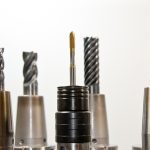
Precision matters when drilling into workpieces. Regardless of the material from which the workpiece is made, you’ll need to ensure the hole is drilled in the right area. A drill jig, however, offers a solution. You can use a drill jig for drilling applications that require highly precise holes in the right area.
What Is a Drill Jig?
A drill jig is a type of jig that, like most other jigs, is used to hold a workpiece. But don’t let that fool you into thinking it’s nothing more than a clamping system. Drill jigs often feature clamps, but they are designed specifically for drilling applications.
Drill jigs hold the workpieces with which they are used while simultaneously guiding drills through premade holes. They are dual-purpose workholding tool. You can use a drill jig to hold a workpiece in place, and you can use it to guide the drill into the workpiece.
How Drill Jigs Work
There are many different types of drill jigs, but they are all designed to hold workpieces and guide drills. You can place a workpiece in the arms of a drill jig, after which you can position the premade holes over the workpiece.
Most drill jigs feature arms and premade holes. The holes act as guiding holes for drills. Before drilling into a workpiece, you can align it with the drill jig’s premade holes. You can then drill into the workpiece through these holes, resulting in a high level of precision.
Why You Should Use a Drill Jig
Considering that you can always drill directly into workpieces, you might be wondering what benefits drill jigs offer. The main benefit of using a drill jig is precision.
Drilling is a cutting process that involves the use of a rotary bit. As the rotary bit presses against the workpiece, it will create a circular hole in the workpiece. You won’t be able to move these drilled holes after creating them. Therefore, you’ll need to ensure that you drill into the right area of the workpiece — and that’s where a drill jig comes into play.
You can use a drill jig to guide the drill into the workpiece. The drill jig will prevent the workpiece from moving by holding it in place. At the same time, it will provide premade holes for the drill. As long as you align the premade holes over the workpiece in the right area, you can rest assured knowing that the drilled hole will be correct.
- SEO Powered Content & PR Distribution. Get Amplified Today.
- Platoblockchain. Web3 Metaverse Intelligence. Knowledge Amplified. Access Here.
- Source: https://monroeaerospace.com/blog/the-beginners-guide-to-drill-jigs-what-you-should-know/



